If you didn’t know, when it comes to delivery vans the Ford Transit Custom is the cool kid on the block.
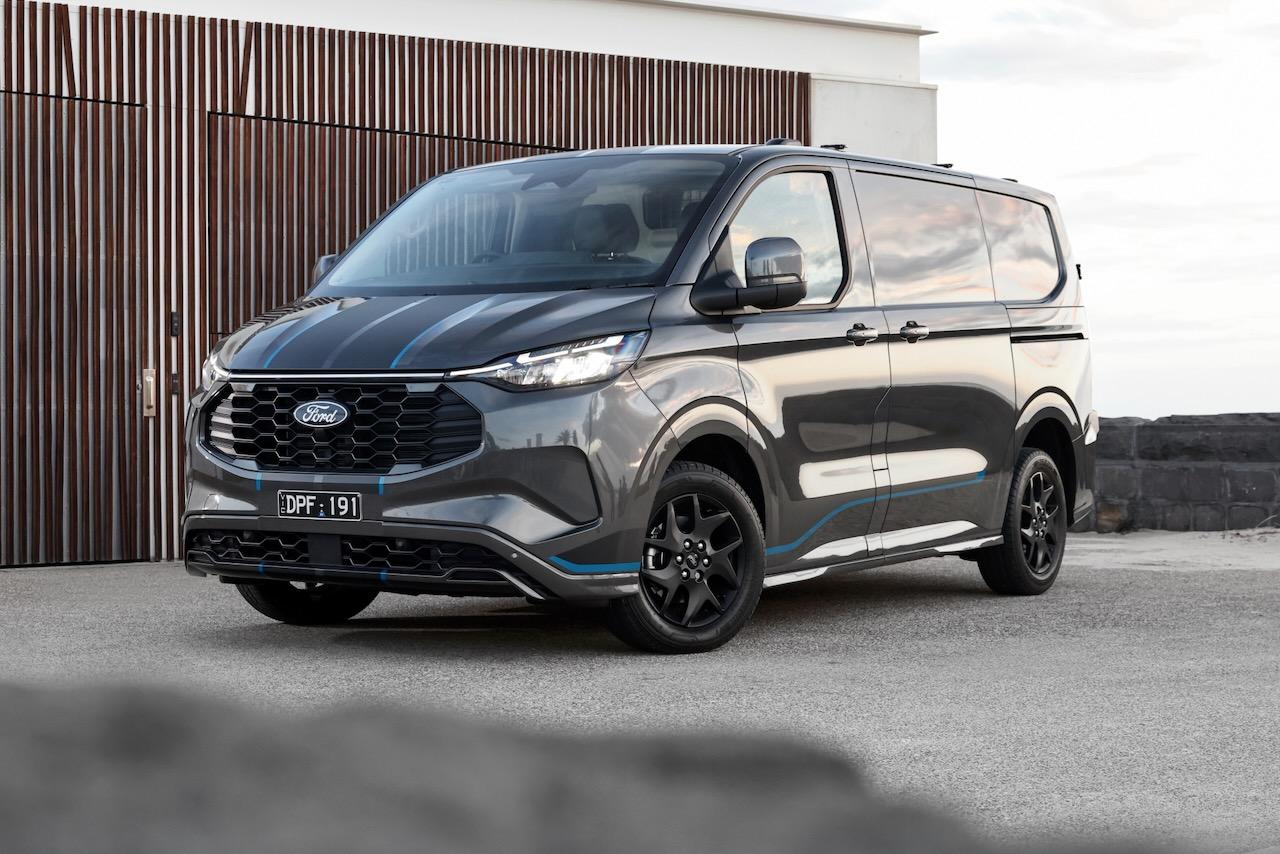
While there are a handful of mid-size commercial vans on the market – on a spectrum to suit most budgets – the Transit Custom differentiates itself by being the van for people who want more than a basic white box on wheels.
A long time ago, I was taught that people buy on emotion, but justify their purchase with logic.
What does that mean? Well, the Transit Custom is likely to appeal to people who need a van but don’t want to look like a painter – maybe they dream of driving a 1970s panel van, but need things like air-conditioning, Apple CarPlay, decent fuel economy, and reliability.
Looks are important too, whether we want to admit it or not. And the Transit Custom looks good, without compromising its box-like cargo area out the back.
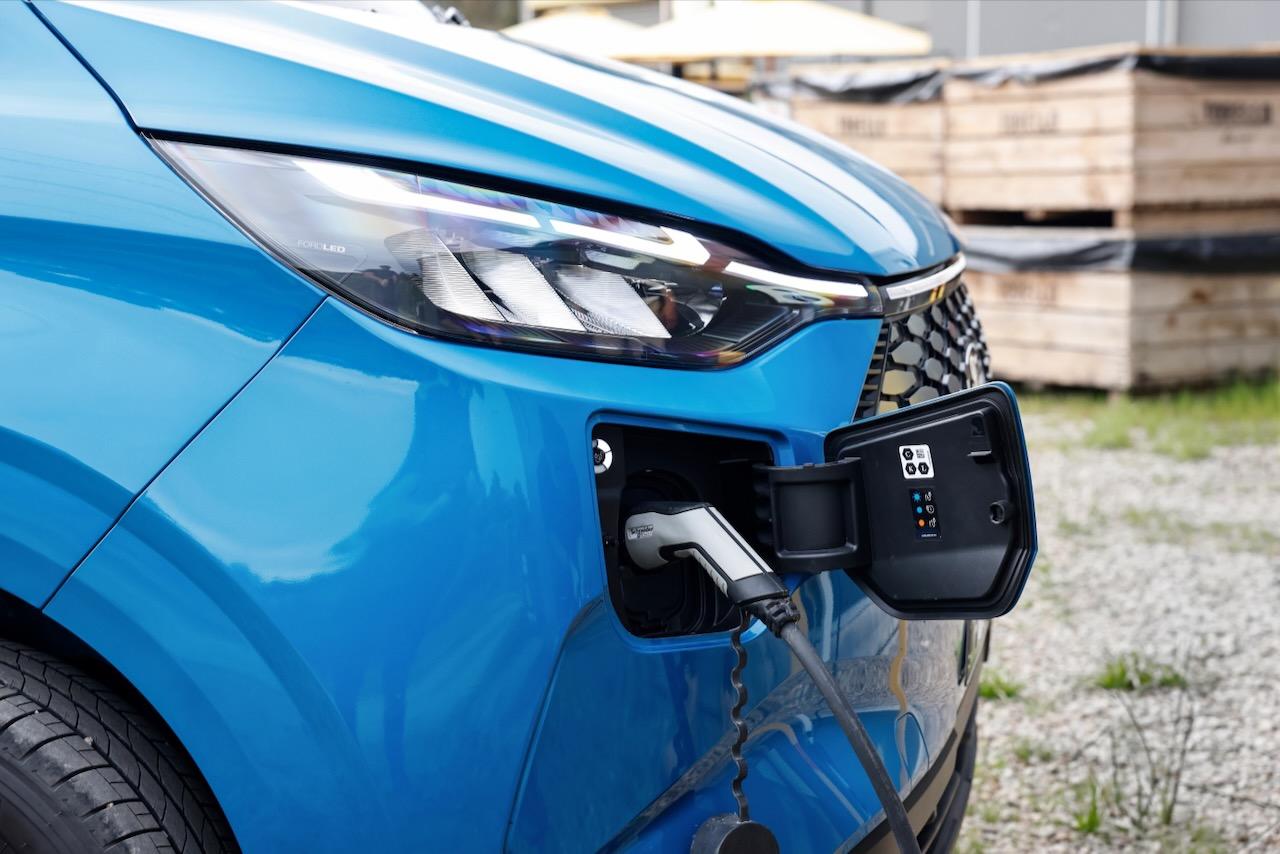
Now, the lineup is expanding, with the introduction of three new – and very distinct – model derivatives: the all-wheel-drive Transit Custom Trail, the Transit Custom PHEV (plug-in hybrid), and, finally, the E-Transit Custom, with purely electric power.
Except, there’s actually more. Buyers have a choice of two PHEV variants – the basic Trend trim with a long-wheelbase body, or the short-wheelbase Sport grade.
All of which means you can not only choose from diesel, plug-in hybrid petrol-electric, or all-electric powertrains, but there are also three driveline configurations, with the diesel and PHEV being front-wheel drive, the Trail offering all-wheel drive, and the E-Transit being rear-drive.
But the addition of two new electrified powertrains isn’t the best part about the latest-generation Transit Custom first released in Australia in mid-2024 – it’s what Ford’s been able to do with the Transit Custom’s ride and handling.
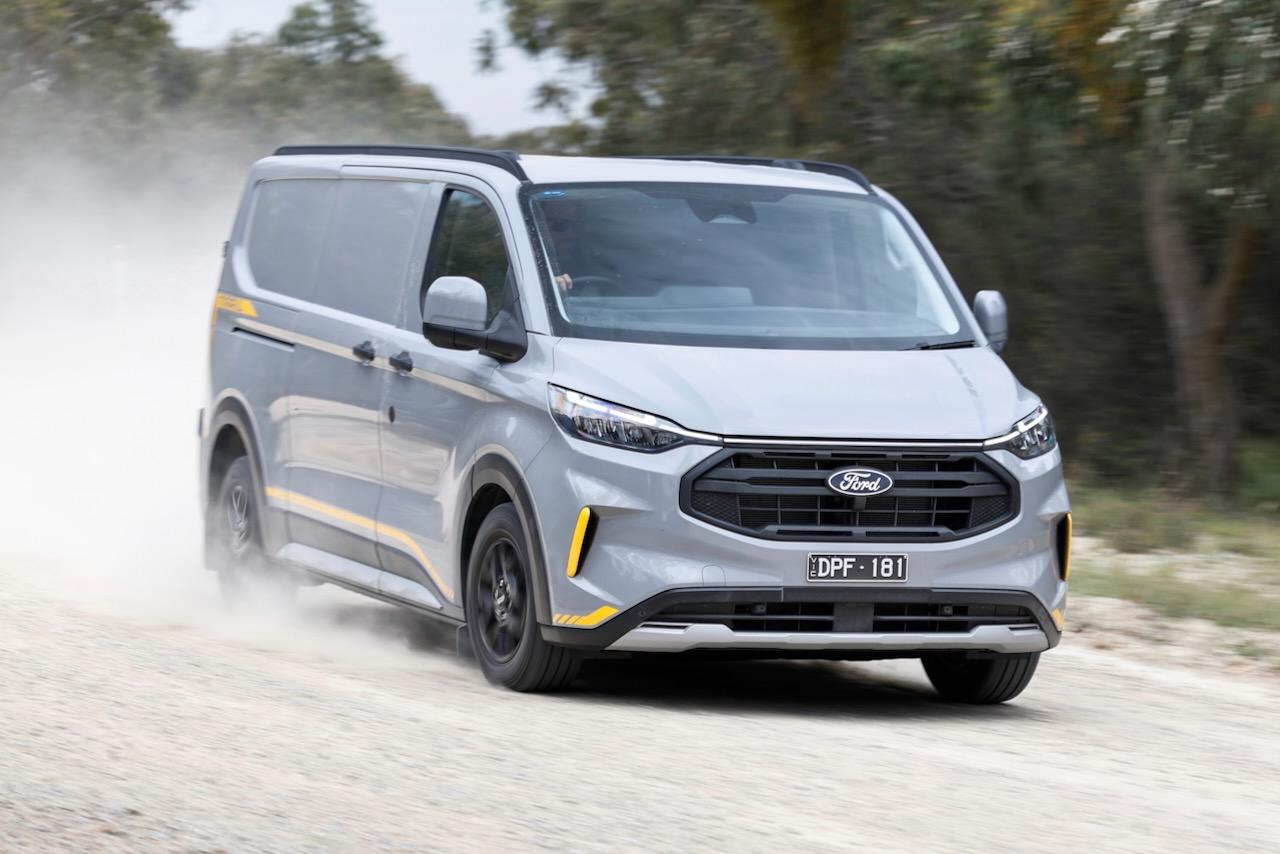
The van features independent rear suspension with coil springs – an unusual choice for a commercial vehicle designed to carry loads.
However, advances in engineering mean the Transit Custom still has a payload capacity of up to 1339kg, while offering significant improvements in the way the van performs on the road. But we’ll get to that.
How much does the Ford Transit Custom cost?
The Ford Transit Custom lineup is priced from $56,590 before on-road costs for the short-wheelbase Trend diesel, with a total of nine variants available – topping out with the short-wheelbase electric Sport at $79,990 before on-roads.
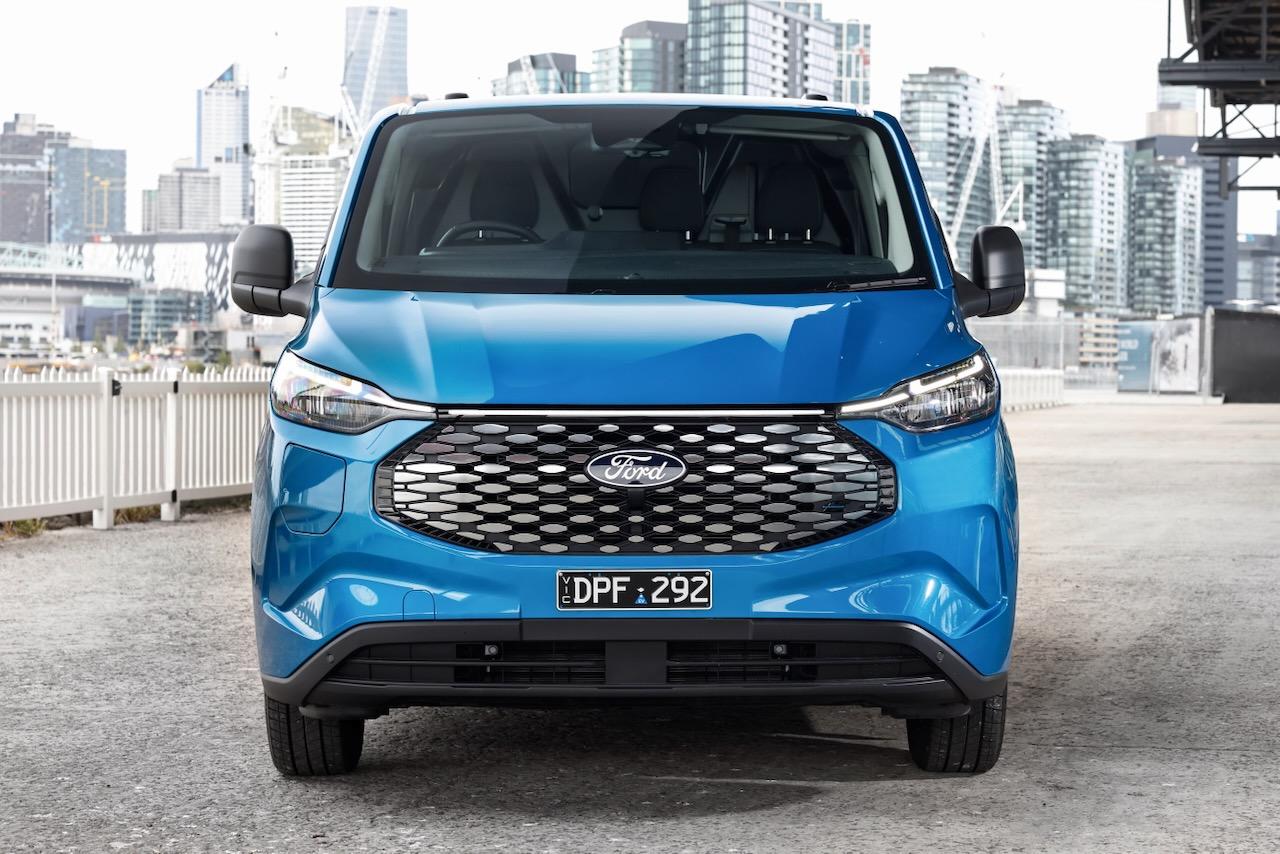
| Model | Price before on-road costs |
|---|---|
| 2026 Ford Transit Custom Trend SWB turbo-diesel | $56,590 |
| 2026 Ford Transit Custom Trend LWB turbo-diesel | $57,590 |
| 2026 Ford Transit Custom Sport SWB turbo-diesel | $59,990 |
| 2026 Ford Transit Custom Sport LWB Double Cab turbo-diesel | $62,990 |
| 2026 Ford Transit Custom Trail LWB turbo-diesel | $61,990 |
| 2026 Ford Transit Custom Trend LWB PHEV | $67,590 |
| 2026 Ford Transit Custom Sport SWB PHEV | $69,990 |
| 2026 Ford E-Transit Custom Trend LWB EV | $77,590 |
| 2026 Ford E-Transit Custom Sport SWB EV | $79,990 |
To see how the Ford Transit Custom lines up against the competition, check out our comparison tool
What is the Ford Transit Custom like on the inside?
The good news is the Transit Custom is just as cool on the inside… with a couple of caveats.
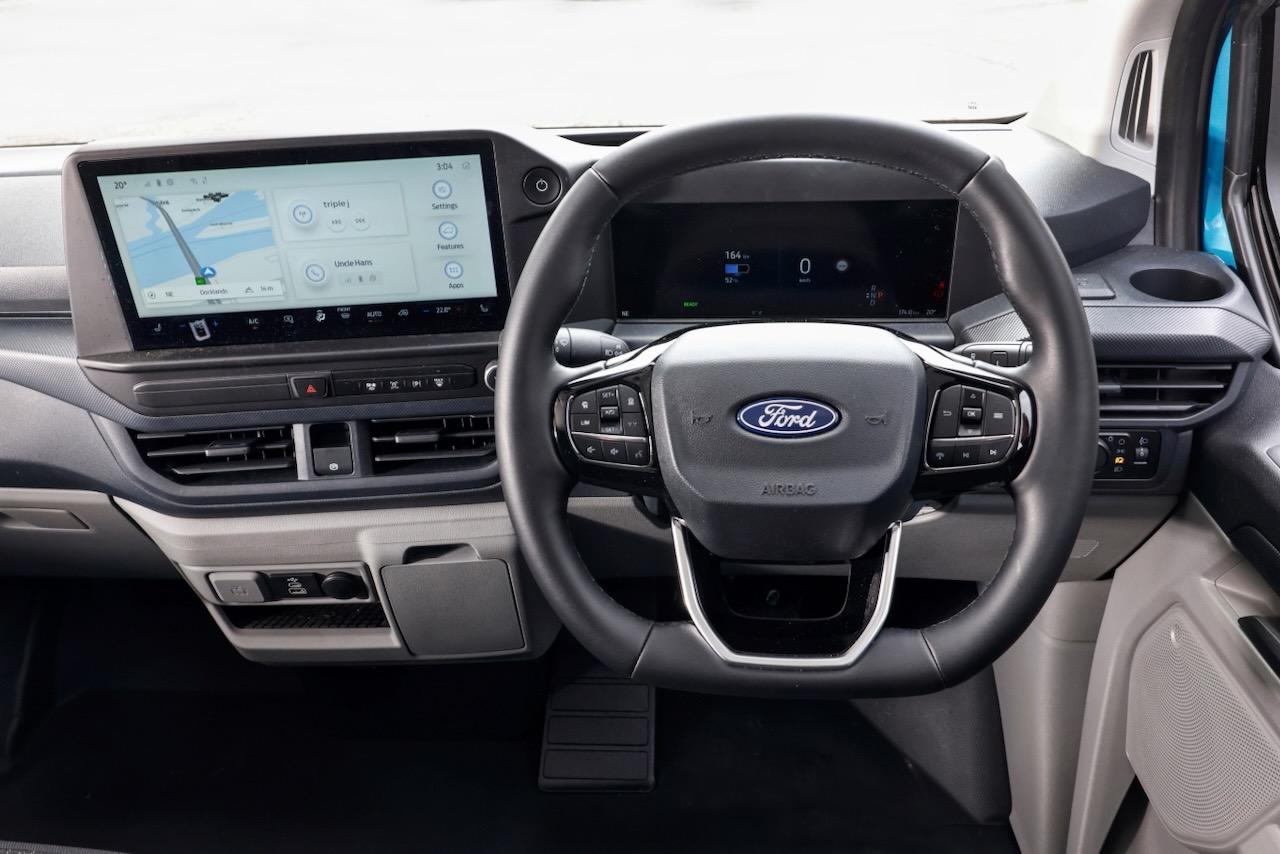
Ford’s done a good job of keeping the design of the cabin functional, while introducing some flair here and there – enough to keep things a little interesting, at least.
Even at its most basic, the Trend doesn’t punish you with bargain-basement plastics and blank switchgear; everything is nice to touch while remaining hardy and modern.
There are also thoughtful storage spaces for bottles, a single fold-down cupholder for the driver, and – in three-seat versions – a flat surface to write on paperwork.
The seating position is somewhere between van and SUV, with less of an upright position than the full-size Transit or Transits of the past – and is the better for it.
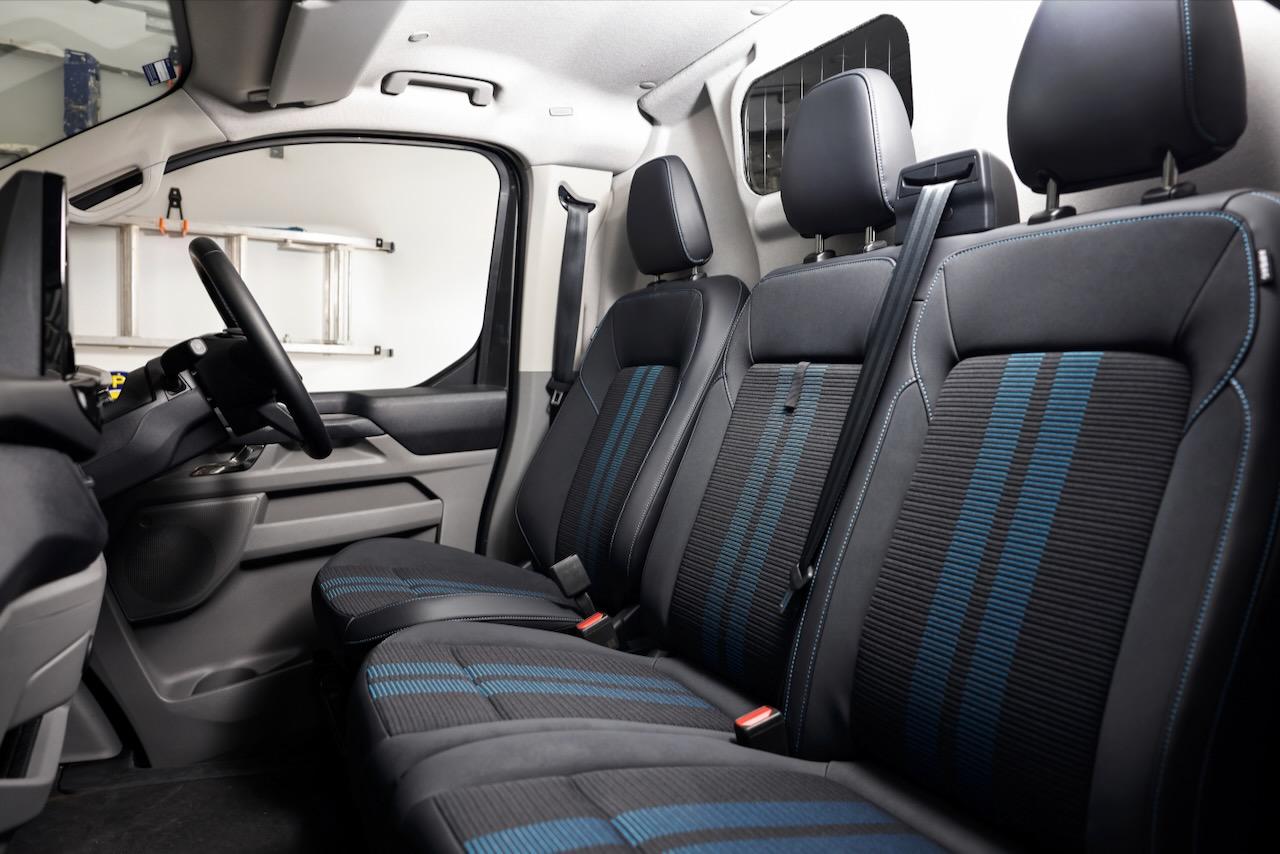
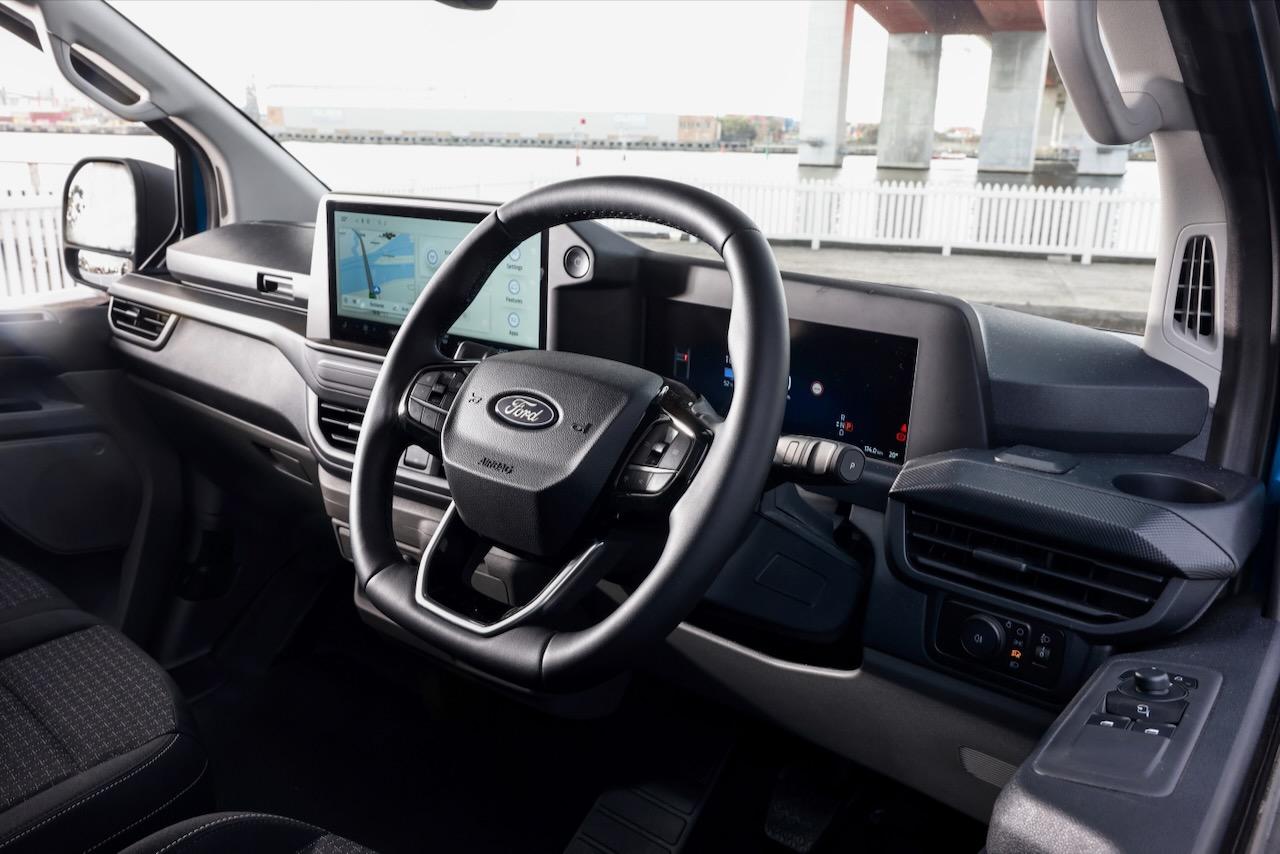
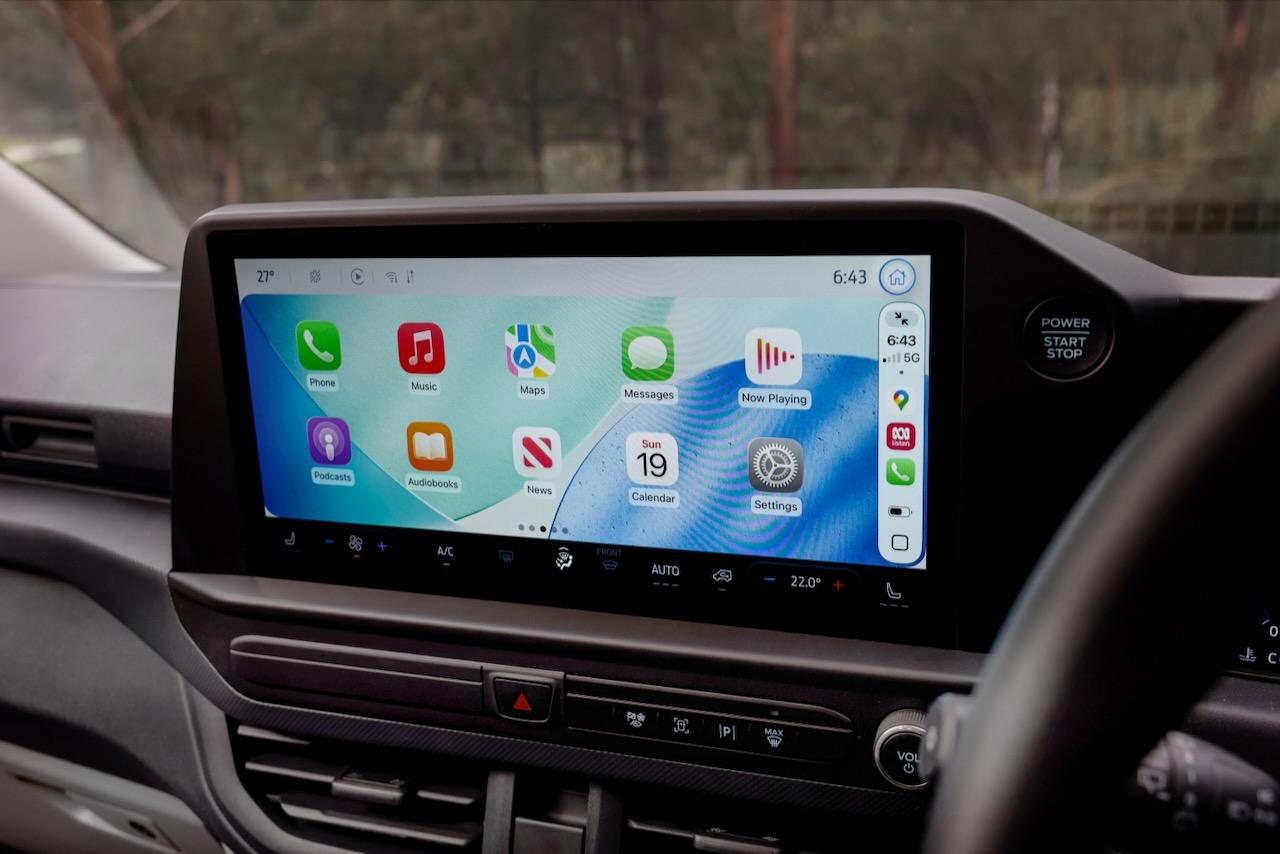

In the PHEV and E-Transit Custom, there’s a digital instrument cluster ahead of the driver, and a large central portrait-style infotainment screen using Ford’s latest Sync 4 operating system and offering quick-loading wireless Apple CarPlay.
In premium variants, buyers can get a digital rear-view mirror, which is particularly helpful if you’re often driving with a packed cargo area. But the lack of parallax can take some time to get used to.
However, Ford has – in its infinite wisdom – decided to swap the right-hand indicator stalk for the gear shifter, meaning you can knock it into neutral if you’re not paying attention going into a left-hand turn. There’s a reason other manufacturers offset their column-mounted shifters…
Then there’s the passenger, who – if seated on the bench seat of the Trend – will secretly hope the journey will be a short one, thanks to the lack of seat adjustment in any direction. Also, a sunvisor that cannot be decoupled for use on the door window, due to the passenger airbag being relocated to the roof trim.
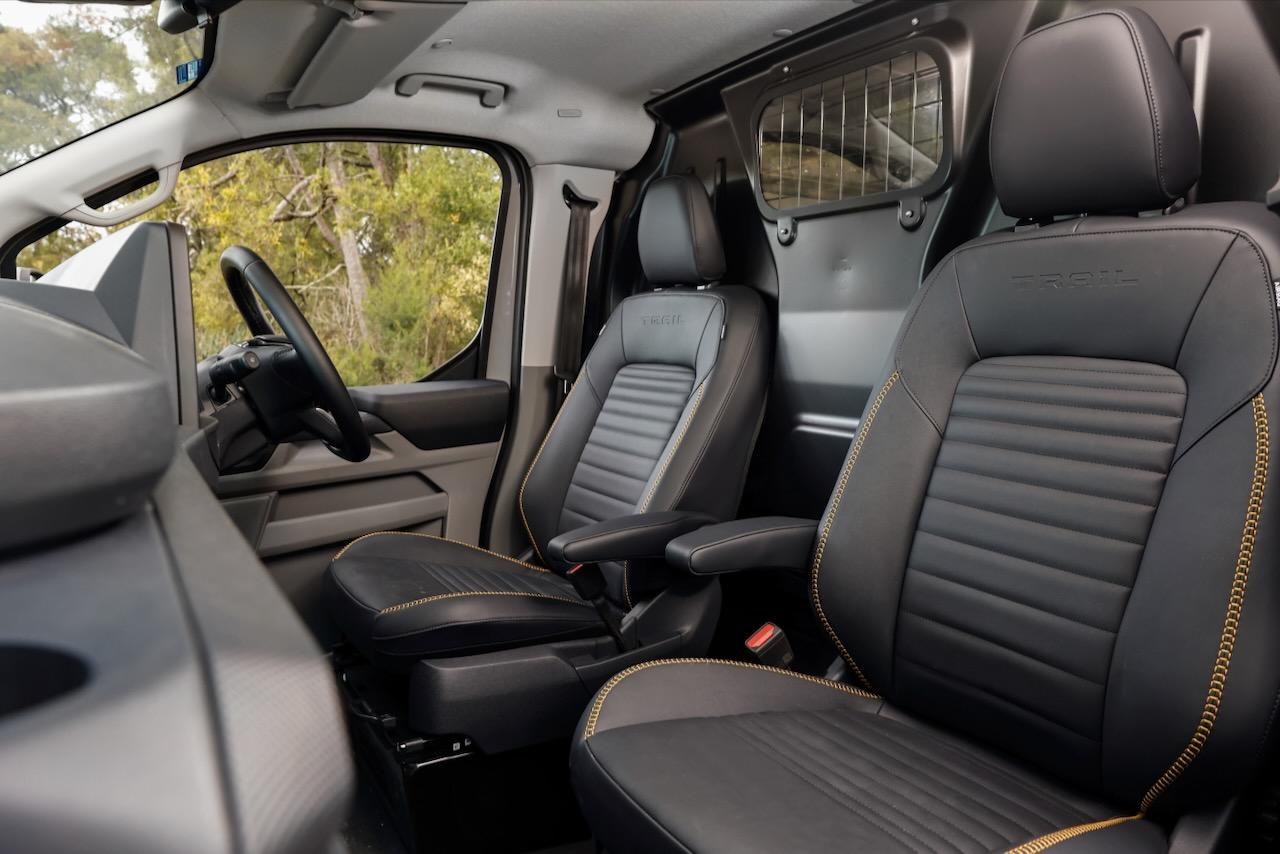
While the Trend is a decent enough office for a courier or somesuch, it’s the Transit Custom Trail that really impresses thanks to some thoughtful touches – including a real seat for the passenger, with armrest.
The leather upholstery helps, but it’s the contrast baseball stitching that really elevates the interior to another level – and I like that Ford is thinking about ways to add style to the Transit Custom beyond the usual basket of goodies.
Out back, the load space for short-wheelbase versions measures 2602mm to the bulkhead, 1427mm high, and 1392mm between the wheel-arches – all of which is good for 5.7 square metres, or three Euro pallets.
For those needing extra space, the long-wheelbase Transit’s numbers are 3002mm, 1425mm, and 1392mm respectively – offering 6m3, which is enough to swallow four Euro pallets.
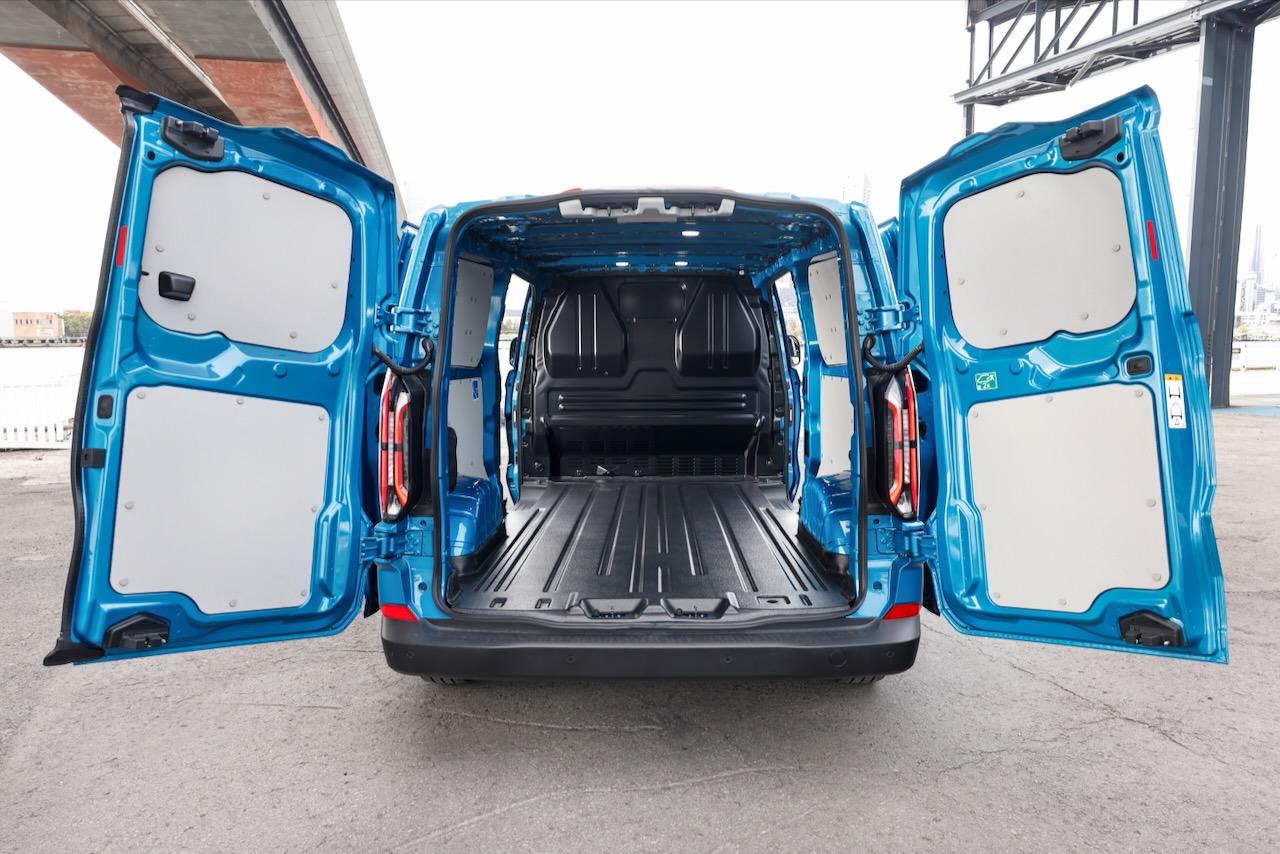
| Dimensions | Ford Transit Custom |
|---|---|
| Length | 5050-5450mm |
| Width | 2032mm |
| Height | 1968mm |
| Wheelbase | 3100-3500mm |
| Cargo capacity | 5200-6000L |
To see how the Ford Transit Custom lines up against the competition, check out our comparison tool
What’s under the bonnet?
With the exception of the E-Transit and Trail, all Transit Custom variants come with a 2.0-litre turbo-diesel four-cylinder engine making 125kW of power and 390Nm of torque – the same engine that can be found in entry-level versions of the Volkswagen Amarok and Ford Ranger utes, and the related Volkswagen Transporter.
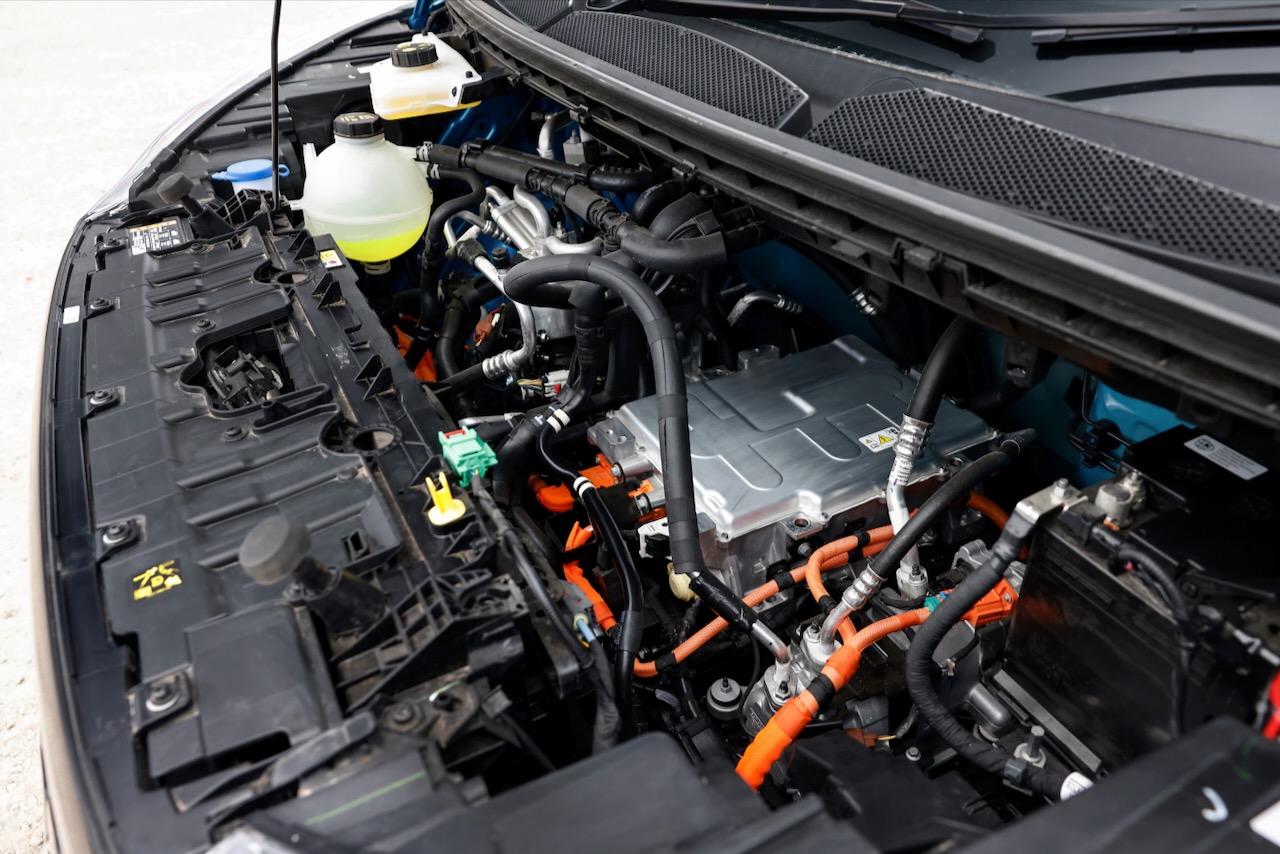
Most model grades drive the front wheels through an eight-speed torque-converter automatic transmission, with the Trail gaining all-wheel drive.
The Transit Custom PHEV is a little different, in that it uses a 2.5-litre Atkinson-cycle non-turbo four-cylinder petrol engine making 86kW and 209Nm, mated to a CVT automatic.
| Specifications | Ford Transit Custom turbo-diesel |
|---|---|
| Engine | 2.0L turbo-diesel 4cyl |
| Power | 125kW |
| Torque | 390Nm |
| Transmission | 8-speed auto |
| Drive type | Front/all-wheel drive |
| Weight | 1836-1992kg |
| Fuel economy (claimed) | 8.0-8.5L/100km |
| Fuel tank capacity | 70L |
| Fuel requirement | Diesel |
| CO2 emissions | 209-223g/km |
| Emissions standard | Euro 6 |
| Braked tow capacity | 2500-2800kg |
Thanks to the addition of an 11.8kWh battery and an electric motor producing 111kW and 320Nm, it’s good for 171kW and an electric driving range of up to 54km.
Meanwhile, the E-Transit Custom is powered by a 64kWh battery feeding an electric motor on the rear axle, putting out 160kW and 415Nm.
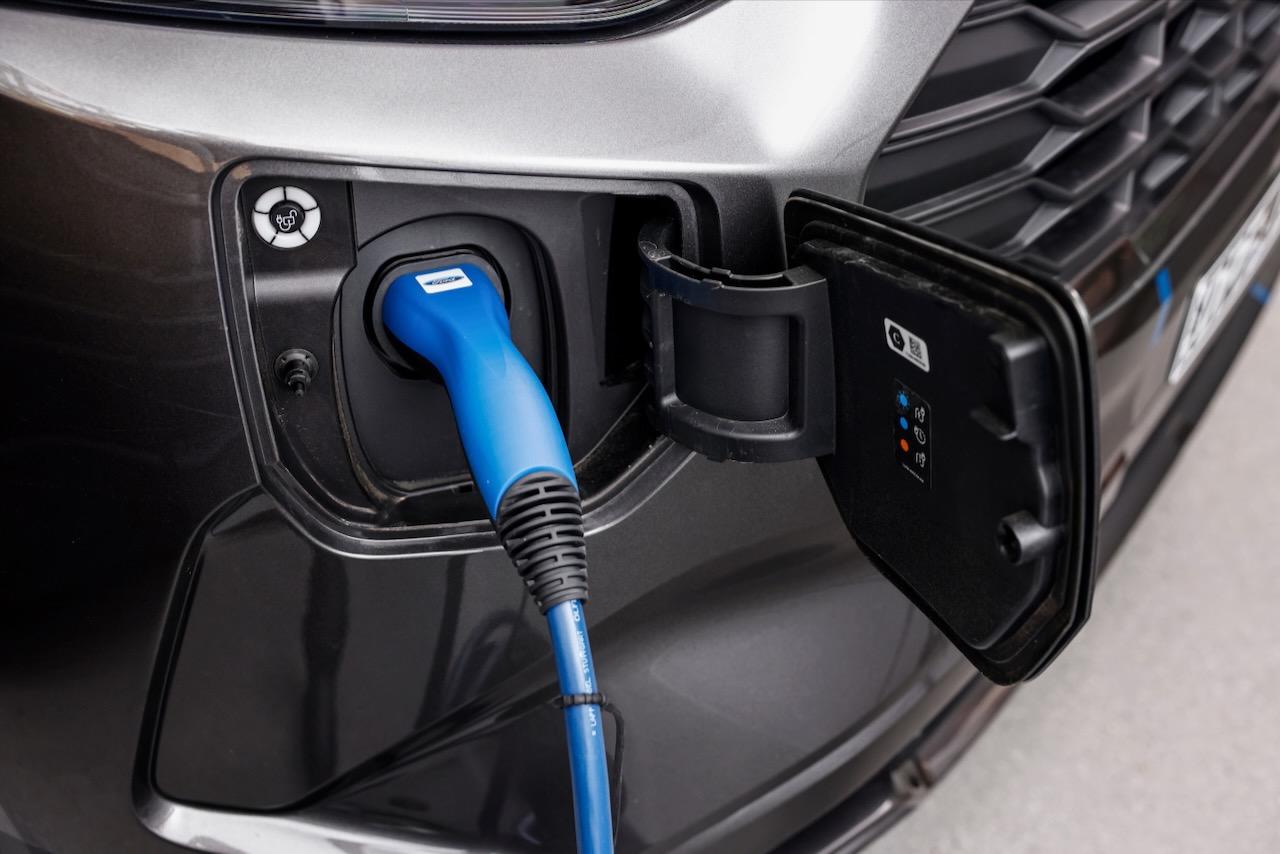
| Specifications | Ford Transit Custom PHEV |
|---|---|
| Engine | 2.5L petrol-electric 4cyl |
| Engine outputs | 86kW / 209Nm |
| Electric motor outputs | 111kW / 320Nm |
| System outputs | 171kW |
| Battery | 11.8kWh |
| Transmission | CVT |
| Drive type | Front-wheel drive |
| Weight | 1928-1977kg |
| Fuel economy (claimed) | 1.7L/100km |
| Electric driving range (PHEV) | 54km |
| Fuel tank capacity | 63L |
| Fuel requirement | 91-octane regular unleaded petrol |
| CO2 emissions | 38g/km |
| Emissions standard | Euro 6 |
| Braked tow capacity | 2300kg |
According to Ford, the E-Transit has a driving range of 301km for the long-wheelbase body, and 307km for the short-wheelbase, unladen.
Ford says that at the maximum DC charge rate of 125kW, the E-Transit takes 32 minutes to fast-charge from 15 to 80 per cent – with a 7.4kW AC charger taking a little over 10 hours to charge from empty to full.
| Specifications | Ford E-Transit Custom EV |
|---|---|
| Drivetrain | Single-motor electric |
| Battery | 64kWh |
| Power | 160kW |
| Torque | 415Nm |
| Drive type | Rear-wheel drive |
| Weight | 2114-2163kg |
| Energy consumption (claimed) | 242-248Wh/km |
| Claimed range | 301-307km |
| Max AC charge rate | 11kW |
| Max DC charge rate | 125kW |
To see how the Ford Transit Custom lines up against the competition, check out our comparison tool
How does the Ford Transit Custom drive?
Confession time: I really love driving vans.

If you’ve never had the pleasure, I can tell you there’s something genuinely fun about commercial vans – particularly the older ones, that really are just a box on four wheels.
Despite my personal love for their primitive dynamics, Ford is boasting that the new Transit Custom drives more like a passenger car than a commercial van.
And they ain’t lying. While you still have to be aware that you’re at the pointy end of a long vehicle – especially when going around tight corners – the rest of the time, it’s more akin to a mid-size SUV.
The Transit Custom has impressive roadholding and offers a relatively high level of confidence through corners, but it’s the ride that is most impressive.

Like most ladder-frame utes, commercial vans can be a bit of a handful when unladen, as the suspension has been optimised to perform when there’s weight in the back.
Somehow, though, the Transit Custom rides brilliantly, both with and without a heavy load onboard.
So much so that I kept increasing the speed I was approaching up-and-over speed humps – beyond what anyone would reasonably hit them at – and the Custom barely noticed them.
While Ford is promising all-terrain tyres on the Transit Custom Trail, our test vehicles were fitted with the same rubber as the rest of the range. That could affect both noise and handling, so we’re looking forward to getting one in for a proper review.
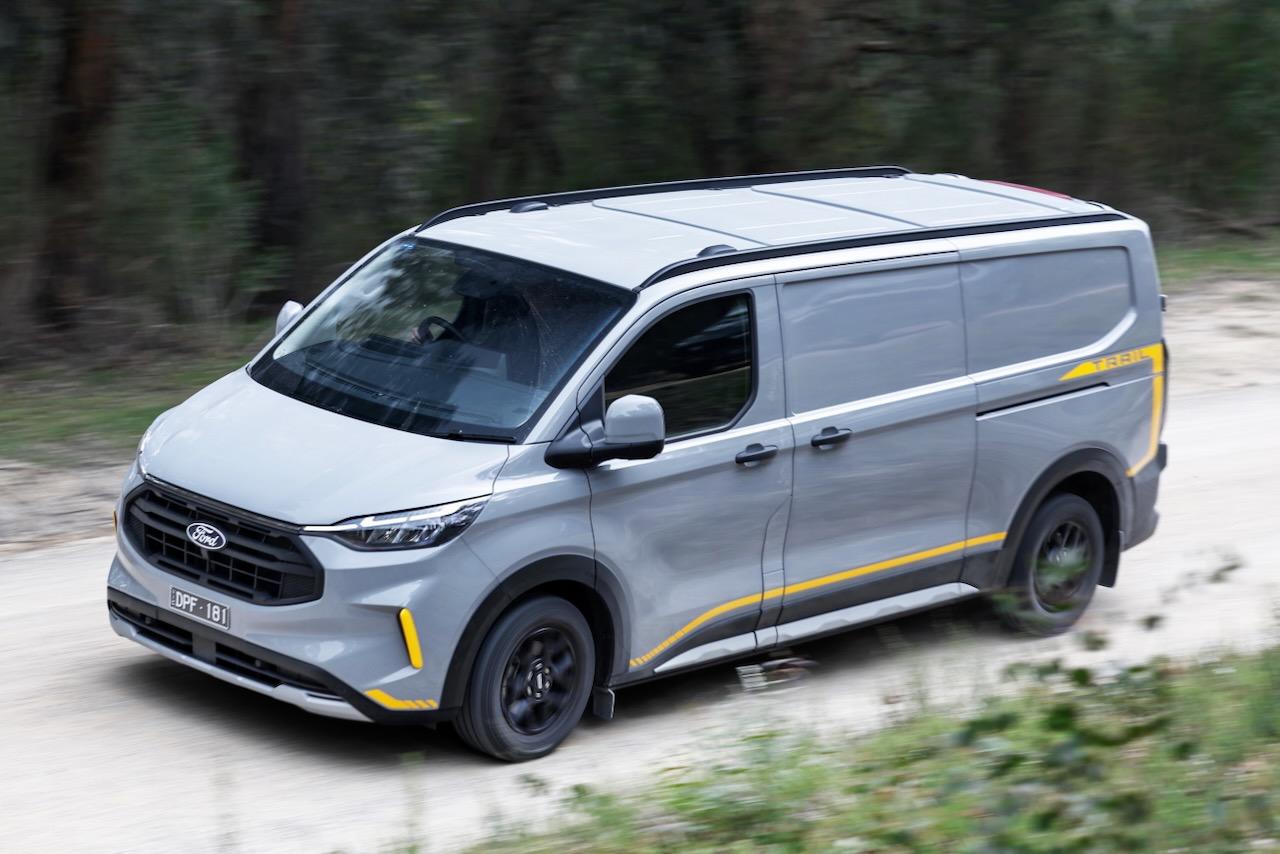
The diesel engine has a decent vein of torque which gets the Transit Trail moving along, and is paired well with the eight-speed auto. Don’t expect to be inspired by the powertrain, but it gets the job done nicely enough.
The E-Transit Custom also gets the job done, but it doesn’t feel as punchy as its performance on paper would suggest.
Sure, plant your foot and it’ll send all 415Nm to the tyres, but you have to want it. Which made me think perhaps it was the throttle mapping that was a little too soggy, discouraging the driver from sucking electrons from the battery in an overzealous manner.
The Transit PHEV’s powertrain, on the other hand, did impress me. Having just stepped out of a Ranger PHEV, the Transit seemed to offer better response off the line, and does a formidable job of delivering power whenever requested while minimising the amount of fuel needed to keep things moving along.
To see how the Ford Transit Custom lines up against the competition, check out our comparison tool
What do you get?
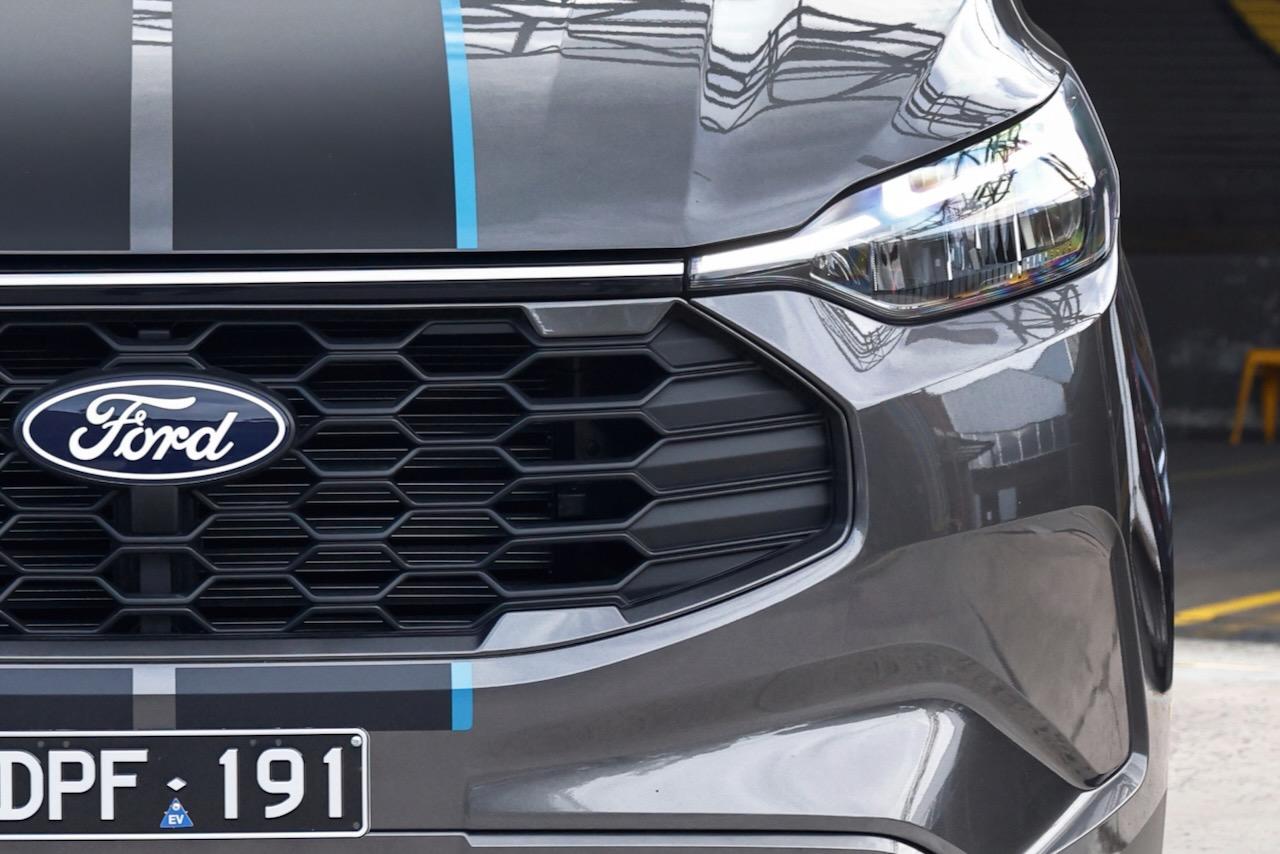

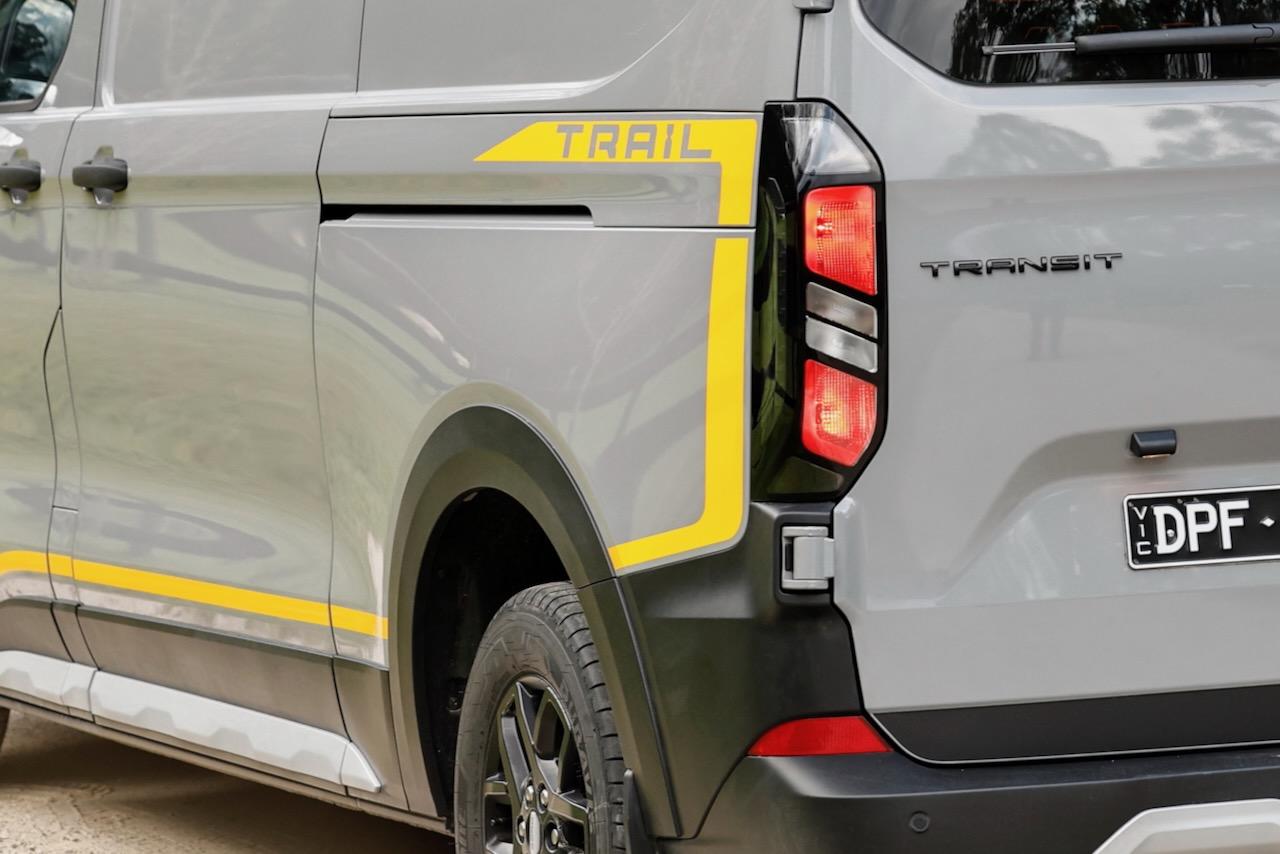
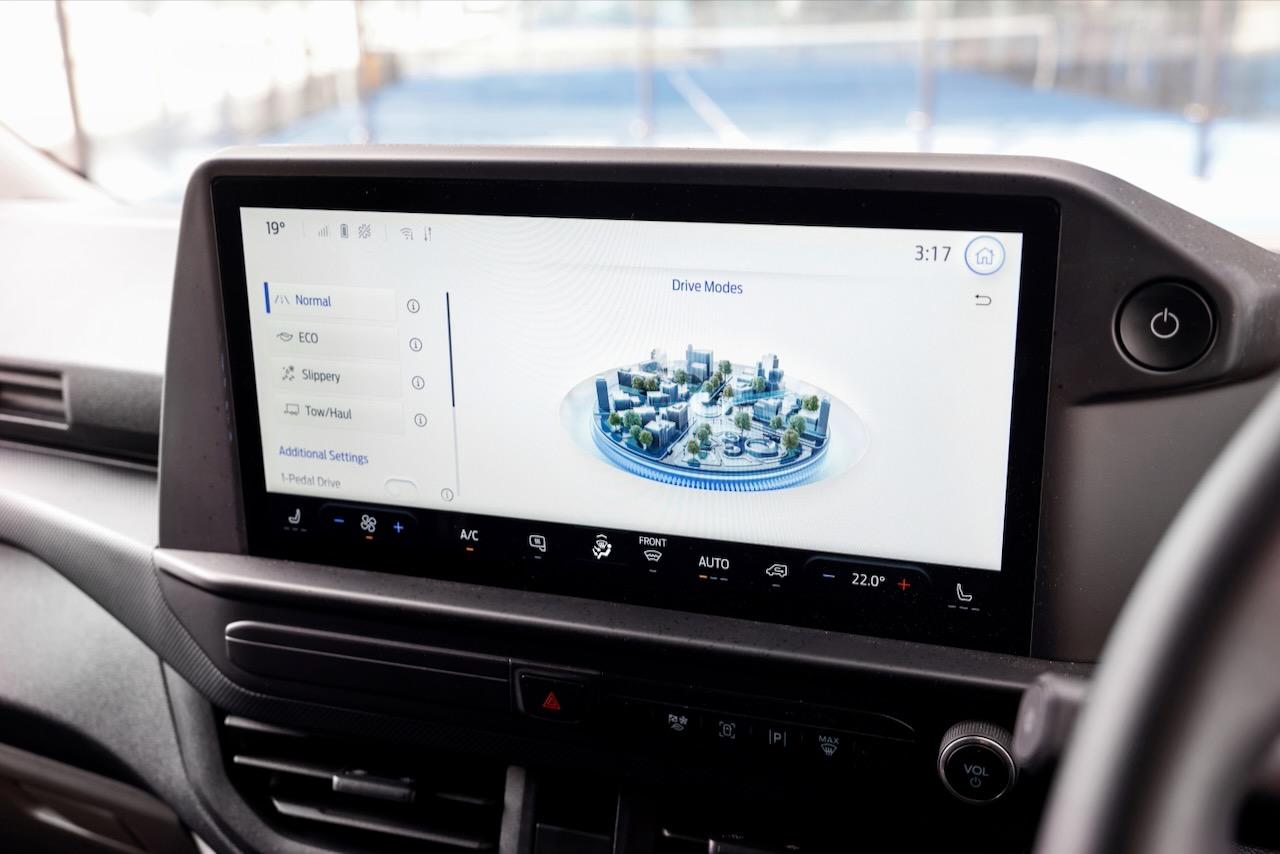
2026 Ford Transit Custom Trend equipment highlights:
- 16-inch steel wheels
- 215/65 R16C tyres
- Steel spare wheel
- Normal, Eco, Slippery and Tow/Haul drive modes
- Automatic halogen headlights
- Automatic high-beam
- Rain-sensing wipers
- Quickclear heated windscreen
- Single sliding left-hand door
- Metal bulkhead with window, load-through hatch
- Rear barn doors
- Roof racks
- Three seats
- Cloth upholstery
- 8-way power driver’s seat
- Single driver’s arm rest
- Heated outboard front seats
- Under-seat stowage compartment
- 13-inch touchscreen infotainment system
- Satellite navigation with one year of Connected Navigation Services
- Wireless Apple CarPlay and Android Auto
- DAB+ digital radio
- FM radio
- 4-speaker sound system
- 12-inch digital instrument cluster
- Wireless phone charger
- 1 x USB-A outlet
- 1 x USB-C outlet
- 1 x 12V outlet
- Single-zone climate control
- Leatherette-wrapped steering wheel
- Tilt and telescopic steering column adjustment
- Push-button start
- 3 x cupholders
The Sport adds:
- 17-inch matte black alloy wheels
- 215/60 R17C tyres
- Sport drive mode
- LED headlights
- LED daytime running lights
- LED tail-lights
- Heated exterior mirrors with auto fold
- Sport body kit
- Rear spoiler
- Exterior striping
- ‘Sports’ interior trim with blue accent stripes
- 10-way power driver’s seat
- Dual driver’s arm rest
- 4 x USB-C outlets
- Dual-one climate control
- Locking lower glovebox
- Upper glovebox with removable rubber insert and USB-C outlet
- Proximity entry
The Trail adds:
- Yellow Trail decals
- Faux leather interior with yellow baseball stitching
- ‘Trail’ embossing on seats
- Unique grille
- Underbody skid plates
- Wheel arches
- Side trims
- 16-inch matte black alloy wheels
- All-terrain tyres
Other options include:
- Metallic paint $700
- SVO paint $1400
- A two-seat configuration: $150; deletes the load-through hatch
- Rear liftgate: $700; replaces the barn doors
- Secure Visibility Pack: $1500; includes steel rear doors with no windows, a metal bulkhead with no window; and a digital rear-view mirror with an integrated dash cam
Is the Ford Transit Custom safe?
Until recently, the Australasian New Car Assessment Program (ANCAP) didn’t award stars to commercial vehicles in the same way it does with passenger cars, but the Transit Custom was given a ‘Platinum’ grade in 2024 – the highest available at the time.
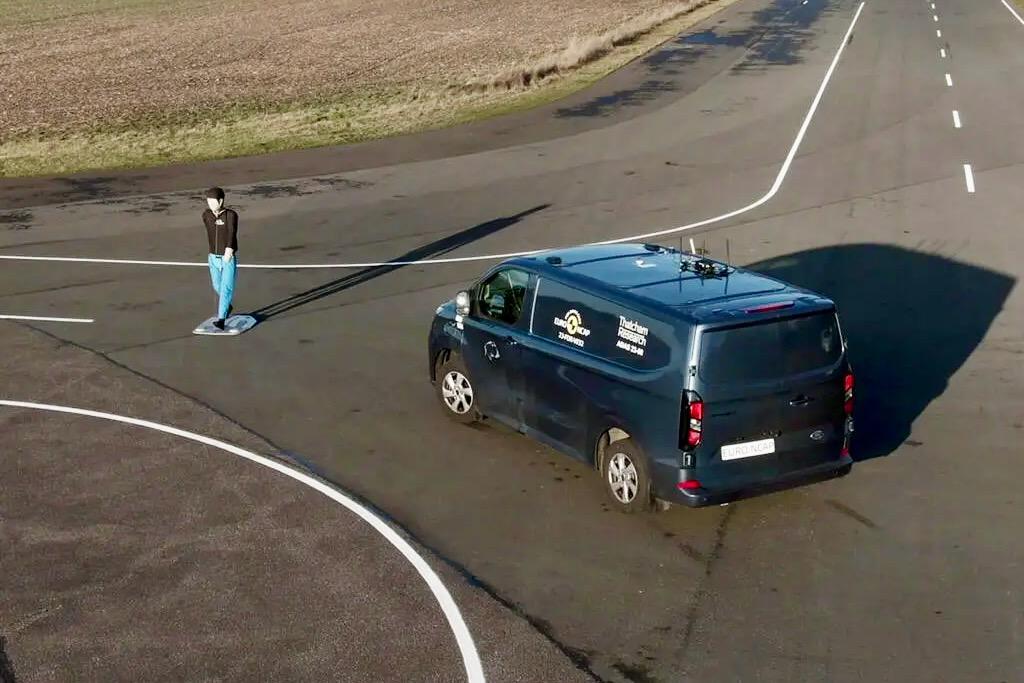
With a score of 96 per cent overall, ANCAP says the Transit Custom “sets the benchmark for fitment and performance, achieving a near-perfect score in safety assessments”. High praise, indeed.
In fact, all safety systems tested received a ‘Good’ score by assessors, with the overall score of 96 per cent solidly beating the traditional safety champions, the Mercedes-Benz Vito and Sprinter, as well as the Hyundai Staria Load.
Unfortunately the current Toyota HiAce, the Ford’s most direct competitor, is one of the first vans to be tested based on the star-rating system, receiving a full five stars – but making it more difficult to directly compare against the Transit Custom.
Standard safety equipment includes:
- Autonomous emergency braking
- Intersection assist
- Reverse AEB
- Adaptive cruise control
- Blind-spot assist
- Evasive steering assist
- Lane keep assist
- Rear cross-traffic alert
- Safe exit warning
- Traffic sign recognition
- Reversing camera with 180-degree view
- Front, rear parking sensors
- Front, front-side, and curtain airbags
To see how the Ford Transit Custom lines up against the competition, check out our comparison tool
How much does the Ford Transit Custom cost to run?
The Ford Transit Custom has service intervals of 12 months, or 30,000km – which is an astonishingly long distance to go without an oil change. Consider the Toyota HiAce, which has intervals of six months and 10,000km.

While the 30,000km intervals may make life considerably easier for couriers doing bulk miles each year, if you’re planning on keeping the Transit Custom beyond its five-year warranty, it may be a good idea to consider interim oil changes every 15,000km.
Service intervals for the Transit Custom PHEV and E-Transit Custom EV are 12 months or 10,000km – capped at $499 each visit.
| Servicing and Warranty | Ford Transit Custom |
|---|---|
| Warranty | 5 years, unlimited kilometres |
| Roadside assistance | 12 months – from purchase, then service-initiated |
| Service intervals | 12 months or 10,000km/30,000km |
| Capped-price servicing | 4 years |
| Average annual service cost | $499/$500 for retail and small business owners only |
| Total capped-price service cost | $1996/$2000 |
To see how the Ford Transit Custom lines up against the competition, check out our comparison tool
CarExpert’s Take on the Ford Transit Custom
The Transit Custom is impressive, offering a multi-generational leap in terms of ride and handling.
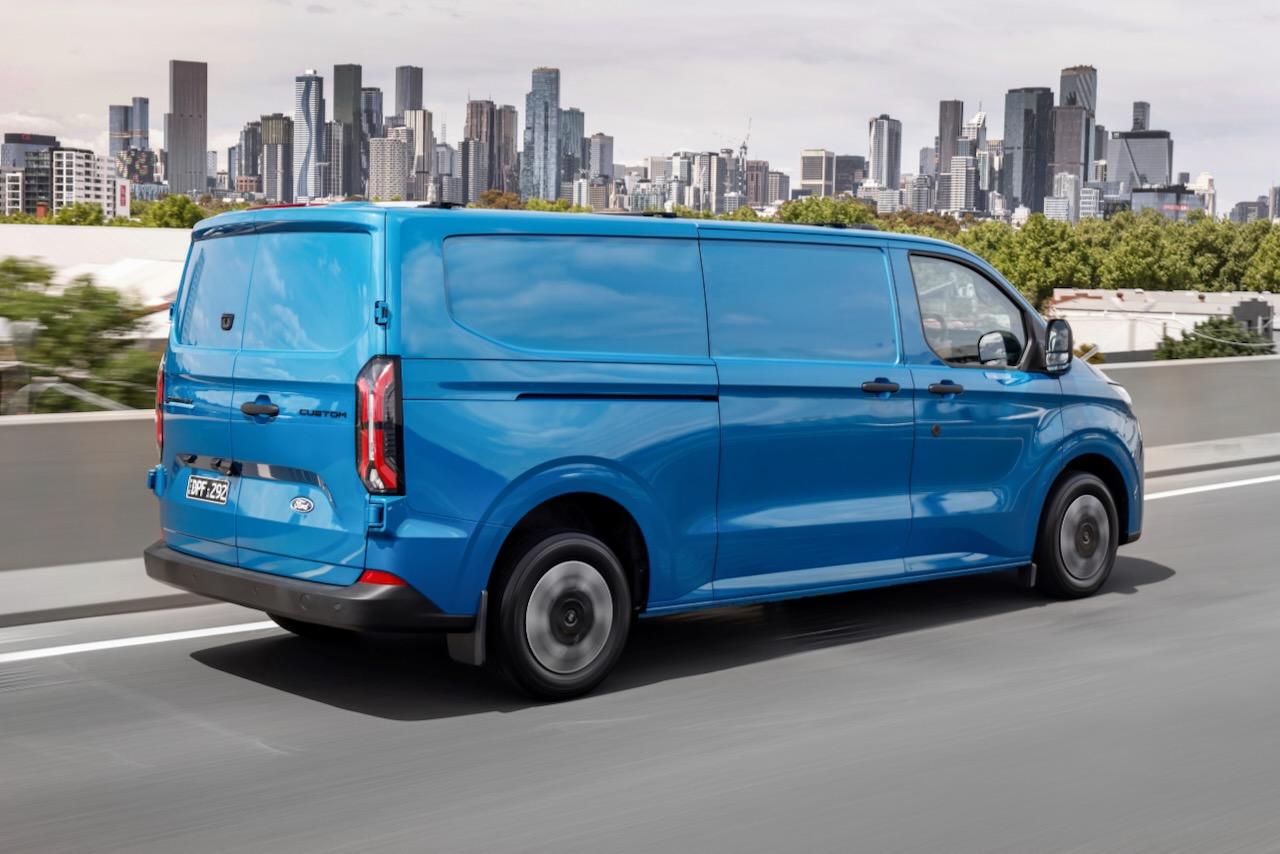
Unfortunately, at the end of the day, we’re still just talking about a commercial van, so Ford’s efforts probably won’t get the headlines they deserve. The engineers do deserve kudos, though.
For those not needing to carry a family into the bush every weekend, the Transit Custom provides a far more sophisticated ride and handling experience than many dual-cab utes. It’s also easier to park than a lot of dual-cabs, too.
Buyers needing the practicality of a van would be hard-pressed to do better than the Transit Custom, with sensible model grades for those who need or want something that will extend to weekend recreation.
For businesses with a predictable and limited delivery area, the E-Transit Custom would make a lot of sense – particularly if there was a way to charge the van overnight at the depot.
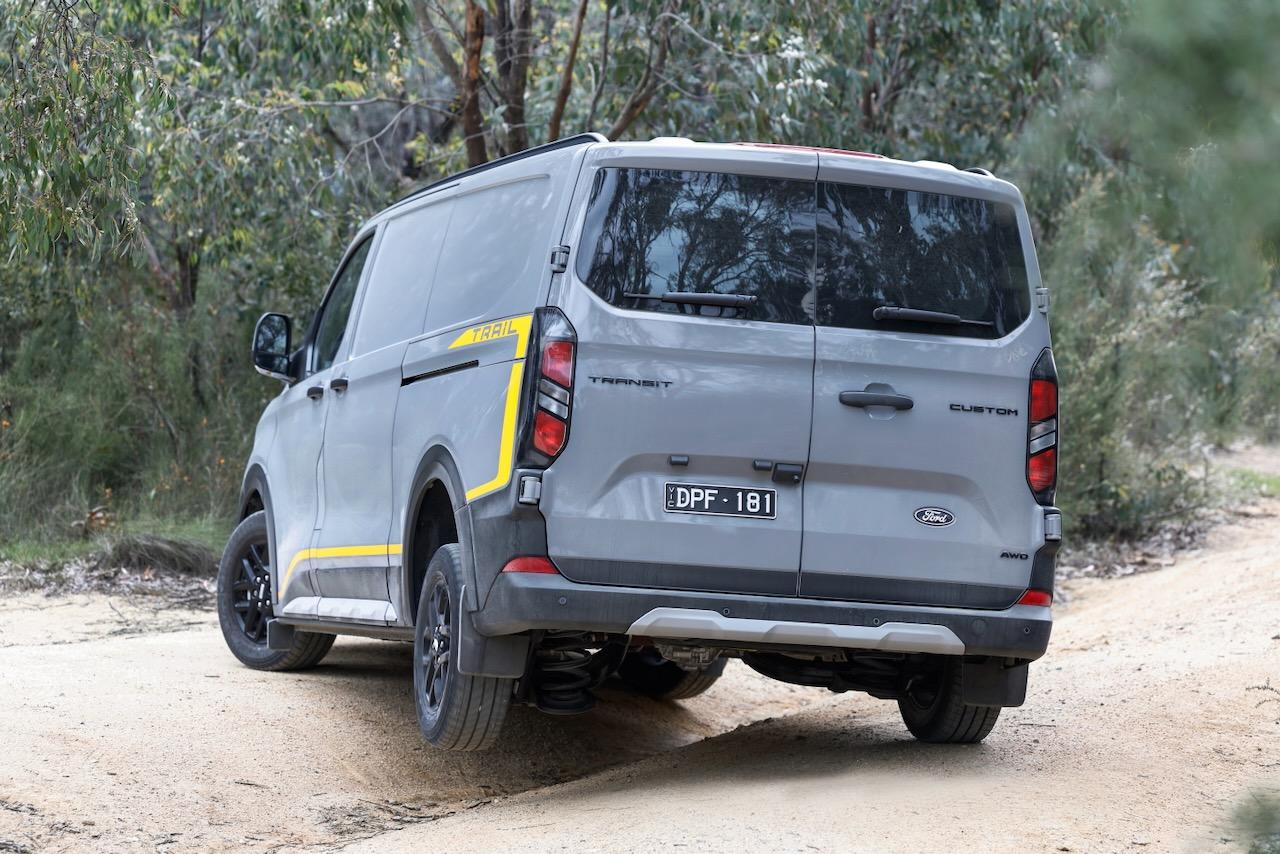
But for couriers or tradies that find themselves venturing beyond their usual patch a few times each week, the plug-in hybrid offers a lot more versatility – while keeping fuel bills (and emissions) to a minimum.
Then there’s the Transit Custom Trail, which is easily the coolest version of the cool van. This is the one you want if you need the extra traction of all-wheel drive, along with a layer of comfort and premium… ness.
Sure, it’s probably overkill for most owners – many of whom will be surfers, backpackers, and the proprietors of coffee businesses – but the combination of looks and capability will be hard to pass for those needing more load space than an SUV or ute.
You can absolutely justify the purchase with logic and specs, but buying a Transit Custom will be an emotional one. And that’s okay, you’re allowed to like commercial vans – they’re not all characterless appliances.
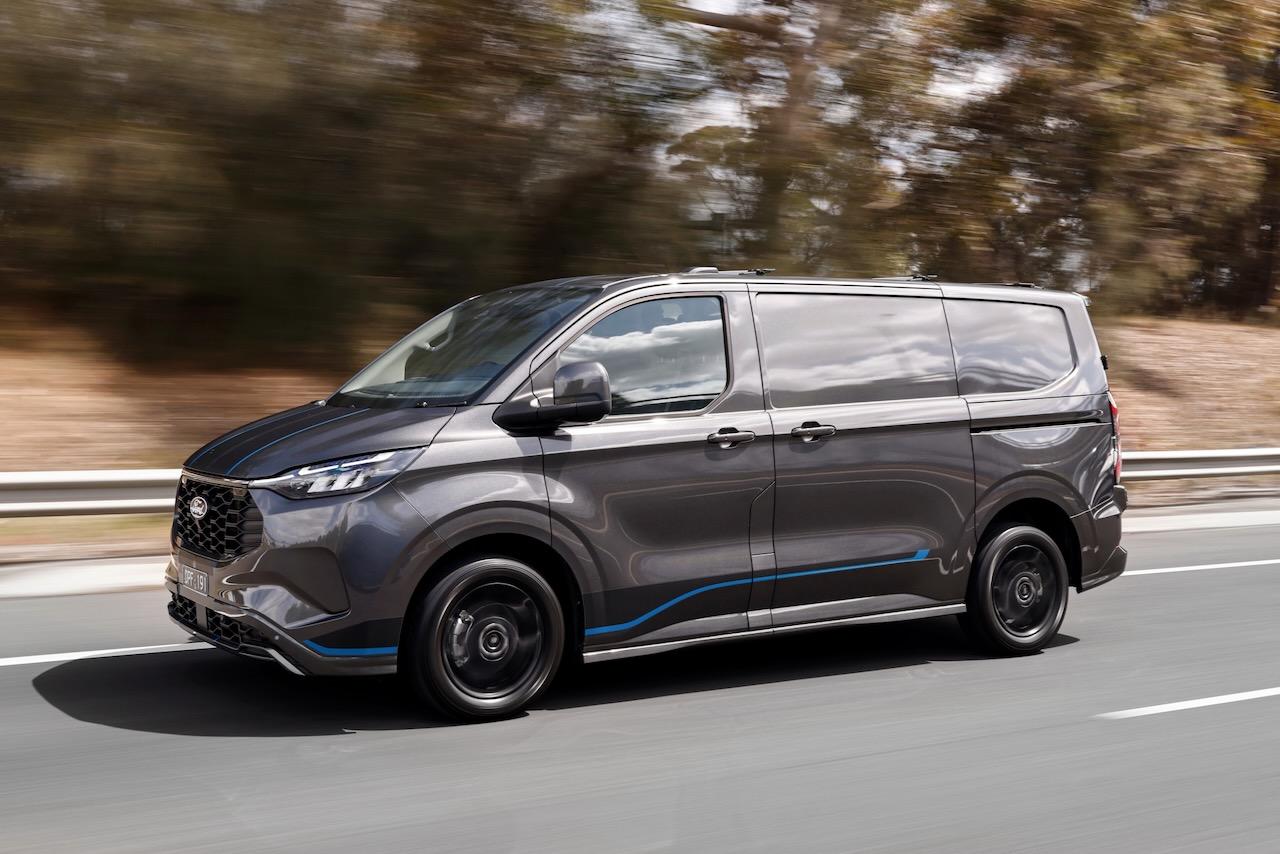
CarExpert can save you thousands on a new Ford Transit Custom. Click here to get a great deal.
Click the images for the full gallery

